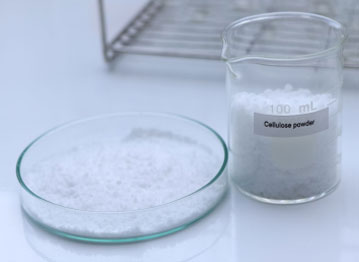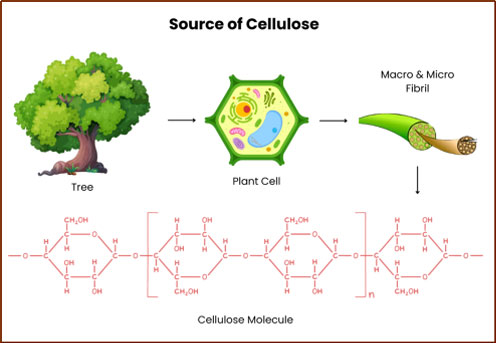Cellulose powder is a finely ground form of cellulose, a natural polymer found in the cell walls of plants. It is one of the most abundant biopolymer available in nature since it is one of the major components of cell walls of most plants. Cellulose powder's versatility, biodegradability, and abundance make it an essential component in a wide range of industries, contributing to various products we use in our daily lives.
Cellulose consists of anhydroglucose units linked together in a homopolymeric structure, arranged in a ß-1,4 configuration. The mechanical strength of plant cell walls is primarily attributed to cellulose. What sets cellulose apart is its ability to maintain a semi-crystalline state even in water, a property uncommon among polysaccharides, which contributes significantly to its structural integrity.
Cellulose powder is commonly used in various industries for its unique properties.

Cellulose Powder
The primary source of cellulose powder is wood pulp obtained from softwood and hardwood trees. Wood pulp undergoes various chemical and mechanical processes to isolate cellulose fibres, which are then finely ground into powder form.
Cotton is another significant source of cellulose. Cotton fibres are composed almost entirely of cellulose, making them a valuable source for cellulose powder production.
Cellulose powder can also be derived from recycled paper and cardboard products. Recycling processes involve breaking down paper fibres into cellulose pulp, which can then be processed into powder form.
Besides wood and cotton, cellulose can be extracted from various plant sources such as bamboo, hemp, sugarcane bagasse, and agricultural residues like corn husks and wheat straw.
